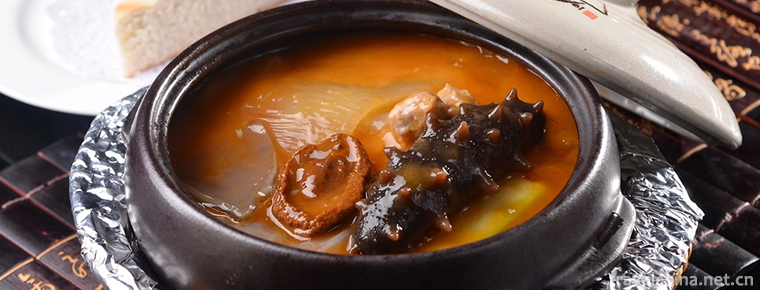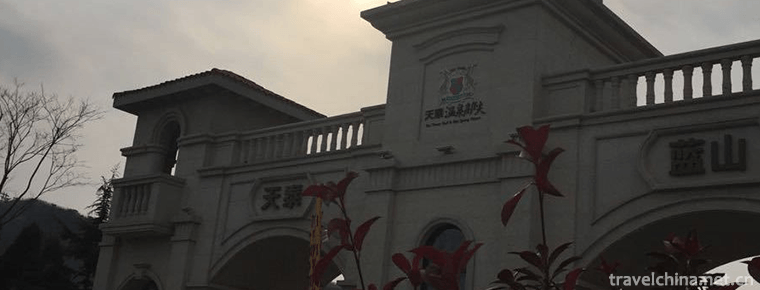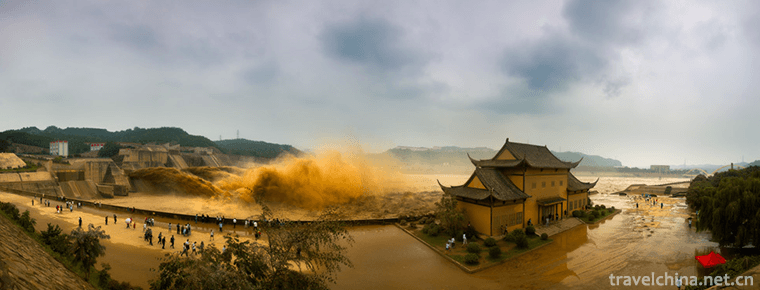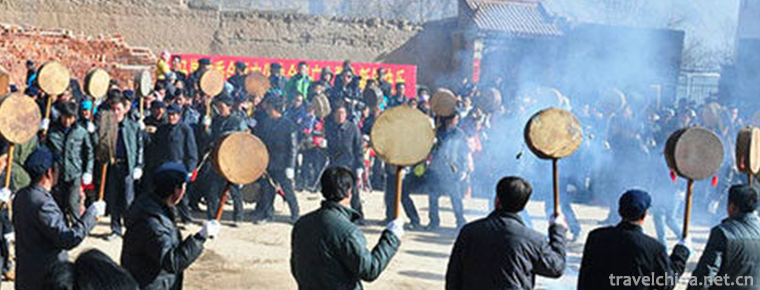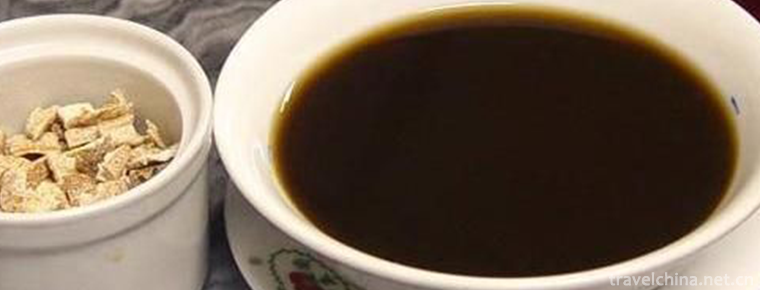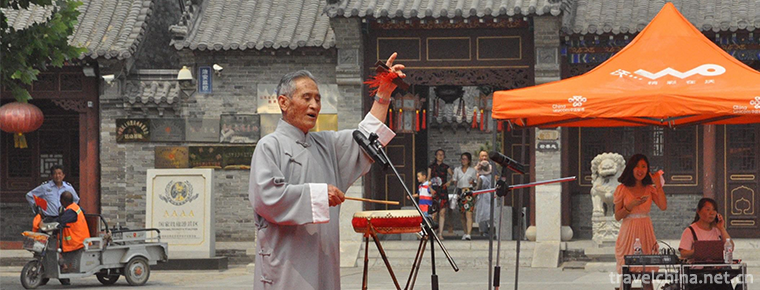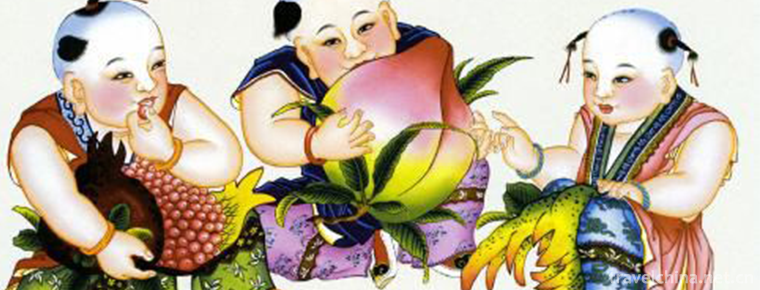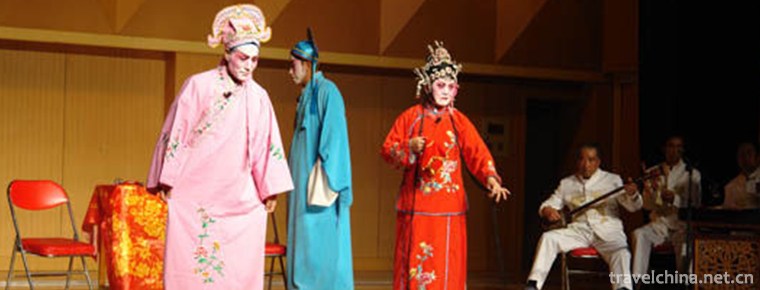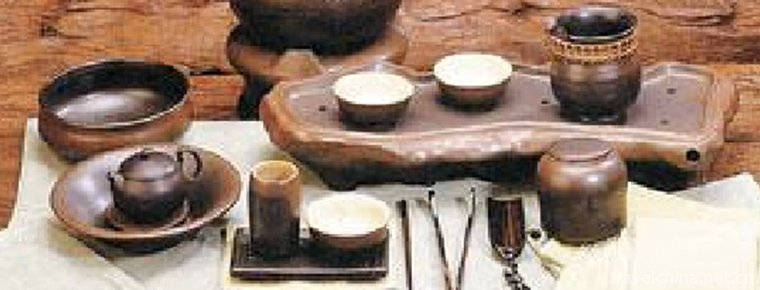Drum Mountain
Drum Mountain
Gushan is located in the east of Jin'an District, Fuzhou City, Fujian Province, and on the North Bank of Minjiang River. It is about 8 kilometers away from the downtown area. It is one of the most famous scenic spots in Fuzhou.
Gushan is a national 4A-level scenic spot and also a national scenic spot. In May 2002, Gushan Scenic Area in Fujian Province was approved by the State Council to be listed in the fourth batch of national scenic spots.
Gushan scenic spot is centered on Yongquan Temple in ancient temples, with more than 20 sceneries in the east, Huilong Pavilion and Lingyuan Cave in the east, dozens of sceneries in the west, especially 18 sceneries, more than 50 sceneries in the south, such as Luohantai and Xianglu Peak, and 45 sceneries in the north, such as Dafeng and Baiyun Cave. These scenic spots are mainly formed by long-term denudation, weathering, collapse and accumulation of granite, which form natural landscapes such as Pantaolin, Liu Hai Diaobu, Yubaofeng Peak, Baxianyan Rock and Drinking Water Rock. In addition, there are many cliff stone carvings in the past dynasties.
Scenic spot
Paleo path
This is the way to climb Gushan in ancient times. From the lower courtyard at the foot of the mountain to more than 2000 steps, through the "seven pavilions and seven miles road", you can reach the Mountain Gate of Yongquan Temple. First Pavilion: "East Pavilion". Crossing the Yuanyuan is the East Bridge, and climbing begins when crossing the pavilion on the bridge. Upper 99 stone steps to "Yangzhi Pavilion" (abolished). There were many inscriptions on the rocks along the way. The second Pavilion is "Shimen Pavilion". The ancient name is "Listening to Taoguan Waterfall Pavilion". 367 steps from the first pavilion. The water bubbles in my ears. The third Pavilion is "Chengyun Pavilion". There are 271 levels between the pavilion and the front pavilion. Along the road there are stone inscriptions such as "Chengyun", "Yangtao", "Xiaogu", "Tianfeng Blows Dreams", "Fengwu Taofei" and so on. Fourth Pavilion: "Half Mountain Pavilion". From the third pavilion to this point, there are 494 steps. Pavilion in Banling, hence the name. Over a hundred steps of the pavilion, there are stone inscriptions of "Lutong Xianyuan" and turning paths to reach "Eighteen Holes View". Nearly 300 steps after the "Half Mountain Pavilion" are stone carved "Peach Rock Cave Entrance". To the east, the Peach Rock Cave and the Peach Blossom Jingshe can be seen. Fifth Pavilion: "Tea Pavilion". About 520 steps can reach the pavilion halfway up the hill. It is named for the tea garden near the pavilion. There are stone inscriptions on the side of the road, such as "unable to stop" and "reluctant to do". It is said that Li Po, the prefecture of Fuzhou in the Qianlong period of the Qing Dynasty, was panting when he climbed the mountain. If you go up, you can't catch it; if you go back, you won't. Successfully titled "Want to Stop" on the boulder beside the pavilion. Sixth Pavilion: "Songguan Pavilion". There are more than 300 steps away from "Heting". There are stone inscriptions of "longevity", "dragon" and "tiger". There are also "loyalty, filial piety, honesty and festival" written by Wen Tianxiang. Pavilion 7: "Dressing Pavilion". Passing the "Songguanting Pavilion" dozens of steps is. Legend has it that the king of Fujian went up the mountain to the temple and changed his clothes here. There is a couplet said: open the door to the former King's Day, into the temple also changed this lichen. Up to this point, sweating, and cold at high places, it is necessary to change clothes and add clothes. Nearby, there are stone carvings such as "no rest halfway", "floating clouds in the fundus of the eye" and "smooth road of the heart".
Yongquan Temple
Yongquan Temple is situated on Gushan Mountain and covers an area of about 1.7 hectares. It still maintains the architectural style of Ming and Qing Dynasties. The temple is nestled in valleys and hills, and the sill corridors are connected. 25 large and small palaces are surrounded by Daxiong Palace. The giant pillars of Daxiong Palace stand tall and the eaves are flying overhead, magnificent and brilliant. In the temple, Saying Ying Muni III Buddha did not wear Sanskrit clothes, but wore Han clothes and sat upright among them. On both sides, there were eighteen Arhats with different manners, and the law was solemn. At the back of the hall, there are "Three Saints" with respect to about 1.15 tons. Like a long table made of mulberry silk wood, it is said that after many fires, it is still in good condition, known as the treasure of the town temple. There are many good oak couplets inside and outside the hall, such as: "There are many white clouds on the seat, when the Zhengdan wind bathes, the Canglong lies behind; in the eyes of the sea is small, see the seven sparrows go east, five tigers come south." All of them are vivid portrayals of the history and environment of the ancient temple.
The ceilings of Daxiong Palace and Yuantong Palace are beautifully painted. Among them, Daxiong Palace has 129 dragon patterns drawn in the thirteenth year of Qing Guangxu (1882), 86 red-crowned crane patterns, and 27 unicorn, white horse, elephant and ape patterns. Yuantong Palace has 75 paintings of stories drawn in the thirteenth year of Qing Guangxu (1882). In addition, there is a huge plaque "Bao Luo Dignity" presented by two brothers, Qingbao, Zhifu, and Qinglin, General of Fuzhou in the Qing Dynasty. There are also dozens of Ming Dynasty brocaded Buddhist sutras, statues and vases of Buddha in Ming and Qing Dynasties. There are ancient bells and drums hanging on the bells and drums on the two sides of the Daxiong Palace. The Diamond Prajna Bell, weighing about 2 tons, has been cast with 6372 diamond Scriptures for more than 300 years.
On the west side of Yuantong Palace is the Sacred Arrow Hall, commonly known as the "abbot" room. There are two male and two female iron trees in the courtyard. They are yellow as velvet balls when they blossom. It is said that Tieshu was planted by King Shenzhi of Fujian and Shenman, the first inhabitant of Tieshu.
At the peak of Gushan Yongquan Temple, there were more than 1500 monks. There are still four giant pots in Xiangji kitchen, which was made in Song Dynasty. It has been more than 960 years since then. One of the largest mouthfuls can hold 20 litres of water and 5 litres of rice at a time. It is really a "pot of a thousand mouthfuls" to feed thousands of people.
Yongquan Temple was destroyed twice in the six years of Yongle in Ming Dynasty (1408) and Jiajing in Ming Dynasty (1542), rebuilt in the seven years of Chongzhen in Ming Dynasty (1634), rebuilt several times in Qing Dynasty, and rebuilt in 1983. Today, Yongquan Temple basically maintains the architectural style and layout of Ming and Qing Dynasties. The whole Buddhist temple has 25 large and small palaces, with Tianwang Hall, Daxiong Palace and Fatang Hall as the main body, rising layer by layer according to the mountain potential, forming a complete ancient architectural group. Two thousand Buddha pottery pagodas on the two sides of Yongquan Temple were fired in the five years of Yuan Feng in the Northern Song Dynasty (1082). One on the left was called "solemn robbery of thousand Buddha pottery pagoda", and the other on the right was called "virtuous robbery of thousand Buddha pottery pagoda pagoda". The two pagodas were made of layered pottery, with eight corners and nine floors, about 7 meters high. The details of the pagoda are imitation of the Song Dynasty wooden pavilion style. 1038 Buddha statues are sculpted on each of the two pagodas, which is called the Thousand Buddha Pagoda. There are 36 monks and martial generals on the eaves of the octagonal pagoda, and 72 ceramics pagoda bells are hung. There are lotus petals, lion dancing and dwarfs on the base of the tower, inscribed with inscriptions, recording the time of building the tower and the names of the craftsmen.
Yongquan Temple was once an important publishing institution of classics and books in Chinese monasteries. It still retains more than 20,000 carved boards from the late Ming and early Qing Dynasties and modern times. The Tibetan Sutra Hall in the temple contains 9,000 ancient printed Buddhist sutras, totaling more than 27,900 copies; more than 200 handwritten sutras; and 657 volumes of Mahayana Prajharamido written in blood. Among them, the most notable is the 17th century Gushan Abbot Dao Pi monk's work "Dafang Guangfo Huayan Jing Shulun Compendium", a total of 120 volumes, 48 volumes, 2425 block engravings. This is a representative Buddhist work in the reign of Kangxi in the Qing Dynasty. Yongquan Temple has been engraving and printing scriptures since the Song Dynasty, and became an important place for publishing scriptures throughout the country during the reign of Kangxi in the Qing Dynasty. Up to now, there are 11375 Buddhist scriptures carved in the temple, which can be regarded as a treasure house of Buddhist scriptures.
In the middle of the Tibetan Sutra Hall, there is a Sakya Tathagata Lingyu Shrine Pagoda. There are only three Shrites and Buddha's teeth in the pagoda. Sariko is a combination of the essence, Qi and God of Buddhist monks. It will shine after cremation. Behind the pagoda lies a Han Baiyu reclining Buddha from Myanmar. The Buddha is symmetrical, calm and sleeping. It is said that this is the form of Sakyamuni in his solitude.
There are Huilong Pavilion, Luohantai Pavilion and Buddhist Pavilion on the south side of Yongquan Temple. The release pool in front of Huilong Pavilion was opened in Shaoxing Period of Northern Song Dynasty (1131-1161). It was restored in Yuan and Ming Dynasties. The stone railings along the pool bank were built in the 27th year of Qianlong of Qing Dynasty (1762). Hundreds of turtles and red carp are kept in the free-living pond. The largest turtle is thousands of years old. There is also a large stone statue of Guanyin Bodhisattva in dripping water in the release pool. The holy water bottle in Guanyin's hands can flow out of the Holy water. There are "orchid garden" and "orchid garden" plaques in the back of the cabinet, which were written by Zhu De in 1961.
Eighteen scenes
Wei Jie, a poet in the Daoguang period of the Qing Dynasty, compiled eighteen sceneries according to the natural scenery and folklore here and carved them on a rock wall outside the Damo Cave.
Damo facing wall, Antarctic ascending sky, immortal ape guarding gorge, ancient crane nest cloud, immortal monument, Fushou full picture, Pantao Manwu, Yubao Chenglin, ant dragon crossing tide, fishing lamp general illumination, lion playing ball, Golden Toad coming out of cave, Fu Hu Pian Jing, Shenlong hearing, armor unloading rock, Cihangjia, Baxian Cave, Thousand Buddhas Sanskrit Palace
Viewing platform
Depending on the wooden railings, the night view of Rongcheng City at the beginning of the lantern is full of panoramic views and gusts of cool wind blow, making people feel as if they are in fairyland. This is the visitor's personal experience in Gushan 18 scenery newly built viewing platform. This viewing platform built by the Provincial Mountaineering Association is located 400 meters above sea level in Gushan, adjacent to the sister building. It is made of imported hemlock, which is antiseptically treated. It is antique and strong and beautiful.
Tourists can enjoy cool, leisure, tea and real farm dishes here. Since its completion, this viewing platform has attracted a large number of tourists and climbers every day to relax and enjoy the cool, adding a unique landscape to Gushan.
Peak peak
The main peak of Gushan, formerly known as Erbifeng, also known as Erbifeng, Dafeng and Gushan Peak, is located in Niutian Natural Village, Jinan District. After the 21st century, the name of the extreme peak was added. According to the Regulations on Scenic Spots, in 2008, the height of the extreme peak of Gushan was 870 published by the State Bureau of Surveying and Mapping in "the second batch of new data on the height of 31 famous scenic peaks" approved by the State Council. .3 meters. If the top of the climax is covered with a kettle, it will be covered with air all the year round. Fuzhou has the folk proverb "Drum Hill Hats, Three Days of Mud Road". That is to say, if the peak is cloudy, it will rain in the day. According to the records of Chunxi Three Mountains in the Southern Song Dynasty, the humanistic beginning of Mount Lngfeng is as follows: "First, Hazelnut was a hazelnut, and there was no human trace. In Xianping of the Song Dynasty, Ding Wei and Zhugong began to climb in the shade".
Gushan Mountains was once the best place for Fuzhou people to watch the sunrise at sea; its peak is said to be the only place in the main city of Fuzhou that can overlook the sea. The sunny day stands on the peak, looking east at the sea, 10,000 hectares, five tigers, Chuanshi and other islands in the mouth of the Minjiang River stand between Yanpu; the sunrise at dawn is a great wonder.
The top of the mountain is the best scenic spot of Gushan scenic spot in Fuzhou, overlooking the land of Fuzhou from the top of the mountain, Gushan Zhi describes it as follows: "Looking around the Shuangjiang River in the south, the mountains across the river are like running tigers; Looking at the county town in the west, the villages are like gathering rice or chess; Looking at the Wanshan Mountain in the north, it is very steep, and standing behind it; Looking at the sea in the east, the number of snails is vague. In waves. Junior Lin Zexu climbed Mt. Gushan and then issued the heroic statement that "the sea shores the endless sky, and the mountain peaks me", which was mentioned in many poems and proses by officials and literati of past dynasties, and the name of the peak came from it.
The cliff carvings on the top of the cliff are concentrated in Gushan. There are many stone carvings in different periods of Song, Yuan, Ming, Qing and Republic of China on the top of the cliff carvings. The famous stone carvings are inscribed with the inscriptions of Gushan, which were inscribed by Gentlemen in the Fourth Year of Xining in the Northern Song Dynasty (1072), Tianfeng Haitao, which was inscribed by Zhu Xi in the Song Dynasty (1187), Xu Luqing in Shaoding (1232), and Wang Wen in Taishou of Fuzhou in the Ming Dynasty. Sheng's "blue sky and day" and so on. There used to be Wangzhou Pavilion, Tianfeng Haitao Pavilion and Haitian Landscape Pavilion on Mt. Lo Gufeng, but they were all abandoned.
The magnificent scenery of Lo Bing Feng has left many poems and prose of officials and literati in the past dynasties. Yuan Tiemer's "Deng Lo Feng" vividly describes the extreme peak momentum of the great land of Fuzhou. Linshibi, a gifted scholar of Fuzhou in Jiajing, Ming Dynasty, visited Gushan Mountain in Fuzhou with a couplet sentence: "The sea in his eyes is small; the clouds on his clothes are large", which vividly depicts the scenario of tourists at the top of Mount Chang, which is surrounded by white clouds and windy waves. "Looking at the sea in the east, the five Tigers stand mightly; overlooking the Minjiang River in the south, fishing sails dots; looking at Rongcheng in the west, like painting; looking at the mountains in the north, like floating green peaks."
water absorbing rock
To the east of the Mountain Gate of Yongquan Temple, there is a stone arch with a Book "Deep Source". Near the cliff and down the stone steps of more than 60 grades, a crack in the middle of a stream, about 3 meters wide, 10 meters deep, like a cave, so called "Lingyuan Cave". Because "Drinking Water Rock" stone carvings, this area is also known as "Drinking Water Rock". On both sides of Lingyuan Cave, there are more than 200 cliff inscriptions since Song Dynasty, accounting for about half of the 480 cliff inscriptions in Gushan. True, line, grass, Li and seal carvings are all available, like a natural treasure house of stone calligraphy, known as the "Southeast Stele Forest".
There are nearly 100 inscriptions in Song, 12 in Yuan, 30 in Ming and more than 100 in Qing Dynasty. Among them, the most famous inscriptions are those of Cai Xiang, a famous calligrapher in Song Dynasty, Shi Yuanchang, Zhu Xi, a Confucian scholar, Li Gang, a national hero and Guo Moruo.
There is also a beautiful legend about the origin of Drinking Water Rock. It is said that more than 900 years ago, Master Yan, the ancestor of Yongquan Temple, recited sutras here. He was disgusted with the noise of the water under the cave and drank to stop the running water. Since then, Jianshui diverted from the eastern half of the mountain Guanyin Pavilion stone wall, the original stream has dried up.
Baiyun Cave in Fengchi
Baiyun Cave is located in the west side of North Fengchi, Gushan. It is often called "Baiyun Cave" because of its high altitude of more than 700 meters. After visiting the Baiyun Cave, Yu Dafu wrote, "The strange and dangerous road of the Baiyun Cave, as people call it, is indeed a well-known spectacle. Even if you have only been there once, you will never forget it all your life. The beauty lies in its steepness.
Drum Mountain Scenic Area
Guling is a part of Gushan National Scenic Spot. Guling is a summer resort located in the eastern suburbs of Fuzhou. It was opened by Western missionaries in 1886. It is about 13 kilometers away from Fuzhou. The mountain is over 800 meters high. The highest temperature in summer does not exceed 30 C. It attracts many Westerners who are not tolerant of the hot weather in Fuzhou. In 1935, there were more than 200 summer villas with different styles, as well as churches, hospitals, sports fields, swimming pools and public buildings such as the Universal Public Welfare Society. Yu Dafu came here to spend the summer in the 1930s. It is another influential summer resort besides Wuling Mountain in Jiangxi Province, Mogan Mountain in Zhejiang Province and Jigong Mountain in Henan Province.
Guling is also well known among Christians in the Far East. After the outbreak of the Pacific War, Nie Zhongsheng purchased a number of missionary villas and built a "Deacon's House" here. In 1948 and 1949, he conducted two far-reaching national co-workers training. Many villagers there today are Christians.
However, Guling buildings are mostly temporary summer shelters, so most of them are small, mostly single-storey huts with stone barriers. Today, most of them are ruins. More than 70 new villas have been built and cars can reach them directly. The mountains are bustling again. The completed "Cryptomeria King Park" and the Shizhushan and Niutouzhai scenic spots under construction add to the tourist scenery.
On February 15, 2012, when Xi Jinping, then Vice President of the State, attended the welcome luncheon of the American Friendship Group, he emotionally told the story of 20 years ago when he helped an American couple visit China's homeland, which made the guests and media reporters present at home and abroad feel both cordial and deeply moved. Vice President Xi Jinping made a speech in Washington on the same day, "Creating a Beautiful Tomorrow of China-US Partnership of Partnership", in particular mentioning that in the spring of 1992, when he worked in Fuzhou, Fujian Province, he saw an article "Ah!" The article of Guling tells the story of an American couple who are full of longing and longing for a place called Guling in China, and who are eager to visit their hometown again but fail to do so.
Moxi Scenic Area
Fuzhou Moxi Scenic Area is located in Quian Village, east of Gushan District, Fuzhou City. The original name of Longxi, 25 miles long, originated in Gushan, because of its rich water resources, Qingdaoguang was full of mills along the stream, so it was called "Moxi". The stream sometimes twists and turns, sometimes pours down. Man walks on a stone, and water flows under it. Rocks, large and small, in the stream are washed clean by the stream water. The continuous flow of water, with different drops, emits various sounds, such as piano, gong, drum, etc. Especially Longtan is deep and transparent. Spring water falls from high places and the sound is more clear and crisp. Shunxi enters the mountain and the two mountains confront each other. The mountain villages and tea gardens in the East are like strangers. On the other side of the stream, a rock is like a yarn cap, with a banyan tree on it. Its branches and leaves are flourishing. It is called "yarn cap pool". On the east side of Moxi, another stream, spring water continuously flows down from Gaoshanzhai and passes through overlapping strata, forming a beautiful picture. On the west side of Moxi, there is a group of rock caves inscribed with "Longxi Monuments". There are inscriptions above the entrance of the cave. Crossing the Moxi River, a path can go up the hillside. A piece of rock beside the road is like the Gongshouxi of Bachelor of Qingyi, inscribed with the words "South Palace Stone worship". There is also a grindstone beside the stream, which used to be the place where the water wheel was put. Later, a dam was built here to become a small reservoir.
After more than two years'development by Yanyou in Fuzhou, Moxi has become the most mature outdoor natural rock wall climbing field in Fujian Province. There are 22 routes of three rock walls, two of which are traditional climbing routes, the other 20 are sport climbing routes. The height of the routes varies from 10 to 21 meters, the difficulty of the routes is 5.7 to 5.12, and the stone is granite. There is also a 21-meter speed descent with a slope of 85-87 degrees. In order to increase safety and protect the rope, a galvanized pipe is installed at the corner of the cliff top to form a smooth transition. It can be said that Moxi Scenic Area in Fuzhou is one of the few mature natural rock climbing sites in China.
Admission ticket
Free access to mountains and mountain climbing; 40 yuan per person (50 yuan per person per year, unlimited number of times);
Eighteen scenery tickets 10 yuan per person
Tourist cable car toll standard: 50 yuan per person per trip, 75 yuan per person










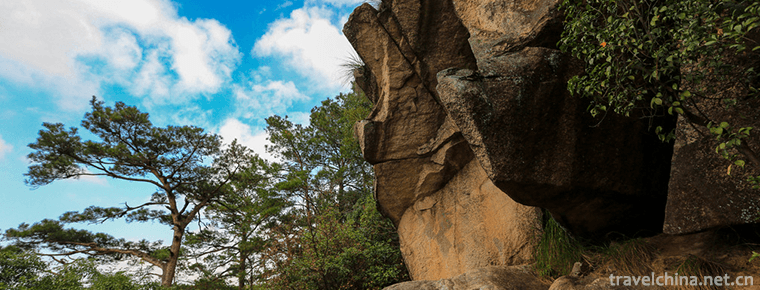
-
Soup with pepper
Soup with pepper, a well-known snack in Central Plains, originated in Xiaoyao Town, Xihua County, Zhoukou City, Henan Province, and Beiwudu Town, Wuyang County, Luohe City. Especially known as Xiaoyao.
Views: 242 Time 2018-11-10 -
Tiantai Hot Spring Resort
Tiantai Hot Spring Resort is located in Jimo Hot Spring Town. It has 27 holes of international championship grade Mountain Golf course. It is a large high-end rural resort centre integrating food.
Views: 343 Time 2019-02-22 -
Xiaolangdi Yellow River Three Gorges Scenic Area
The Three Gorges Scenic Area of the Yellow River in Xiaolangdi is a world geological park, a National Water Conservancy Scenic area, the most attractive place in China, ten hot spots in Henan Province.
Views: 155 Time 2019-02-25 -
Badang dance
Badang Dance is a kind of ancient folk dance, which originated from the ancient Qiang people's "Temple Festival" in Dingxi Minxian, southeastern Gansu Province. It is also a sacrificial ritu.
Views: 189 Time 2019-04-02 -
Herbal tea
Herbal tea is the general name of traditional Chinese herbal medicinal plant beverage. Guangdong herbal tea is the representative of traditional Chinese herbal tea culture. Herbal tea is a kind of bev.
Views: 193 Time 2019-05-13 -
Wooden drum
During the performance of the wooden drum, one person holds the wooden board in his left hand and the drum in his right hand, beating the wooden board and the book drum in turn in standing rap to matc.
Views: 291 Time 2019-06-05 -
Taohuawu Wood Engraving New Year Picture
Taohuawu New Year Picture is a Folk Woodcut New Year Picture in the south of the Yangtze River. It was named for its production in the area of Taohuawu in Suzhou. It and the woodcut New Year pictures .
Views: 117 Time 2019-06-18 -
Tongwei Opera
Tongwei Xiaoqu Opera is a kind of traditional Xiaoqu Opera popular in Tongwei County. In the Ming and Qing Dynasties, Tongwei folk artists absorbed various flavors of Longdong Daoqing, Wanwanwanqiang .
Views: 194 Time 2019-06-21 -
a type of Shaanxi Opera popular in the Weinan Dali region
Bowl-bowl tune is one of the local operas in Shaanxi Province, also known as "lamp-bowl tune" and "Ruan'er tune". The former is named for the main rhythm of the small copper bowl a.
Views: 432 Time 2019-06-25 -
Production Techniques of Oolong Tea
Oolong tea production technology is a local traditional handicraft in Anxi County, Fujian Province. Historically, during the reign of Yongzheng in Qing Dynasty (1723-1735), tea farmers in Anxi County .
Views: 155 Time 2019-06-29 -
Yi Peoples Cigarette Box Dance
Yi cigarette box dance, the traditional dance of Hani Yi Autonomous Prefecture in Honghe, Yunnan Province, is one of the national intangible cultural heritage..
Views: 161 Time 2019-07-12
